Times when sporting teams colours caused confusion
- Published

Tomos Williams of Cardiff Blues passes to a team-mate - he hopes.
In rugby it's the players who can end up seeing double after a big hit or heavy fall - but when Cardiff Blues hosted Glasgow Warriors in the European Champions Cup, participants and fans were left rubbing their eyes.
The Blues, unsurprisingly, were in blue. But so were Glasgow.
Home fly-half Gareth Anscombe said the colour clash was an "out-and-out disgrace" and television pundit Martyn Williams said it was his most difficult commentary job he'd ever had and asked: 'What was with those kits?` on his Twitter account., external
Which got us thinking about other colour clashes in sport, starting with a grey day in Murrayfield.
A grey area
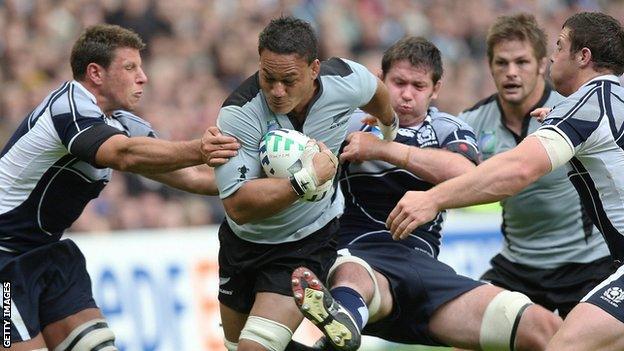
New Zealand's Chris Masoe, in grey, takes on Scotland's defence, also in grey, during the 2007 World Cup
Scotland's navy blue is not a million miles away from all black, but both the Scots and New Zealand changed kits for a Rugby Union World Cup pool match in 2007.
The result was a symphony in blue, grey and black with spectators unsure who was who or what was what.
One way to decide - as the old joke goes - was that the All Blacks were the ones with the ball.
They were also the ones with the points, running out 40-0 winners on their way to clinching Pool C.
The Kiwis wore their grey kit again in the quarter final against France in Cardiff where it turned out not to be their lucky colour as they fell to a shock 20-18 defeat.
Seeing red
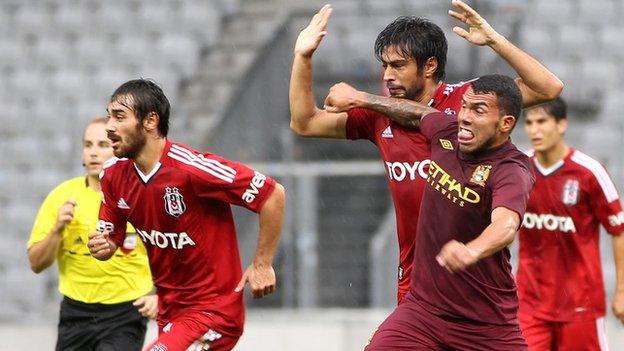
Scarlets versus Maroons - Besiktas v Manchester City in 2012
How many shades of red are there?
Is crimson the same as scarlet or maroon different from vermillion?
These were valid questions when Manchester City (normally resplendent in light blue) faced Besiktas in Austria in 2012.
It was only a pre-season friendly, but a headache for those watching or officiating as the Turkish side's all red kit made identification an issue.
Result? A 2-0 win for City and the colour red left to their neighbours in Manchester.
The invisible team-mates
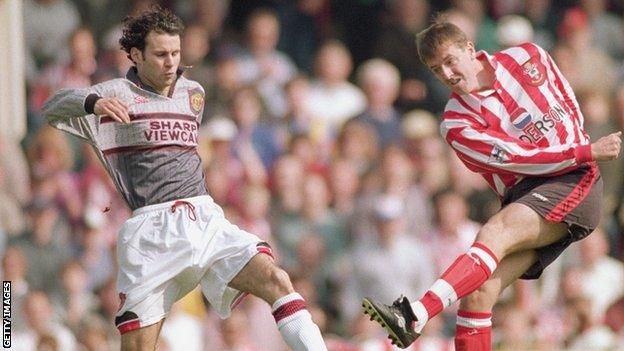
Ryan Giggs (left) challenges Southampton's Matt Le Tissier but wonders where his team-mates are.
Which brings us to not so much a colour clash as a cautionary tale about choosing your change kit carefully.
April 13, 1996 was the date when Manchester United - chasing a Premier League and FA Cup double - turned up at Southampton in grey and promptly lost their way.
Well, according to manager Alex Ferguson they lost the ability to see each other in their second kit as the relegation-threatened Saints marched into a 3-0 lead.
The Red Devils turned out for the second half in their third-choice blue and white kit and pulled a goal back through Ryan Giggs, but the 3-1 defeat could have been a mortal blow to their title chances.
Instead, wins against Leeds, Middlesbrough and Nottingham Forest saw United prove that you could win things with kids, provided they could see each other.
We're the ones in stripes
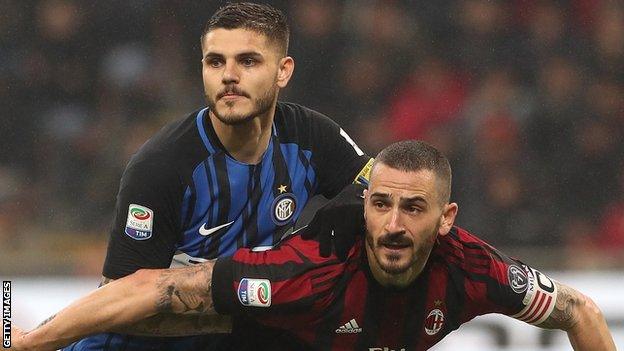
Stripes are always in fashion in Milan
Inter v AC Milan is one of Europe's greatest sporting rivalries.
The great Milan adversaries share a ground, the Giuseppe Meazza Stadium which is universally known as the San Siro.
They also like to play in stripes - blue and black in the case of Inter and red and black for AC Milan.
It's the black that is the problem for fans and commentators, making both sets of players appear very dark.
And it's important to know this season's colour when bragging rights are at stake in the fashion capital of Europe.
It's all the same in black and white
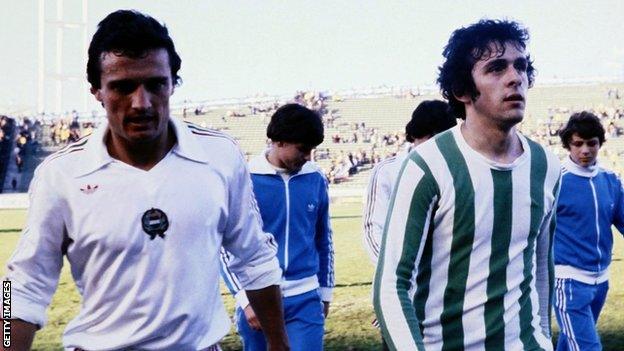
And in the green and white stripes of France, it is Michel Platini (l)!
When Barnsley travelled to Crystal Palace in 2013 referee Keith Stroud decided their blue and black away kit clashed with the home side.
So they ended up playing in Palace's away kit.
With both side's wearing the same badge perhaps it was no surprise the game ended in a a 0-0 draw.
Going back in time the limitations of black and white television led to unexpected changes.
At The Fifa World Cup in 1978 the red of Hungary and the blue of France were too similar in black and white, so Hungary wore white and France borrowed a local team's kit of green and white stripes.
And have you ever wondered why Wales were wearing black shorts in so many of those classic TV rugby union highlights from the 1970s?
Simple, the shorts meant viewers could tell Wales from Ireland in the greyscale world of monochrome TV.
The same applies to blues of Scotland and France, though memory suggests both were noticeably darker than red or green.
Ironic then that it was easier to tell red from green on a black and white TV than Cardiff from Glasgow in full colour!